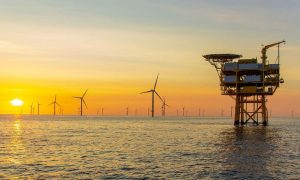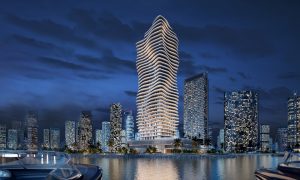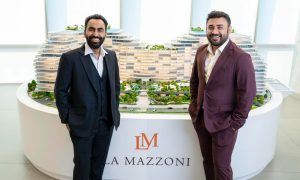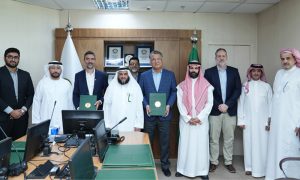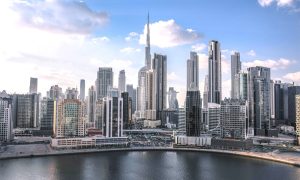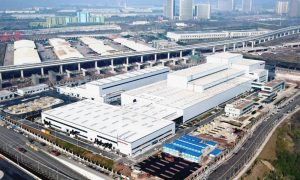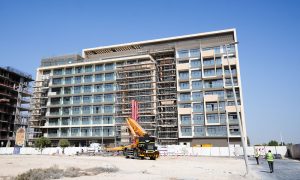Access all areas
Hyder Consulting’s portfolio spans some of the largest infrastructure projects in the world and even the world’s tallest building. This month three of the firm’s top advisors share their experiences of project – and ambition – management
Mohsen Kashani: Business director for land development
Mohsen Kashani has been based in the UAE for 15 years – albeit inadvertently – and has spent 40 years of his career with Hyder.
Over that time Kashani has worked on projects that are not only the jewels in Hyder’s crown, but the iconic landmarks that define Dubai; including Palm Deira, Emirates Towers, Burj Khalifa and Dubai Marina- which he refers to as “the best marina development in the Middle East.
Currently he is engrossed in a sustainable development for Abu Dhabi’s Urban Planning Council (UPC) on the Capital District. It’s the first project where the LEED certification applies to the infrastructure, rather than the properties.
“Sustainability came on the agenda in the Middle East around five or six years ago, but in a downturn the first thing to suffer is sustainability and the environment. We encourage our clients and interact with them, and this project is a result of that approach,” Kashani explains.
Accommodating federal ministries and foreign embassies, Capital District will become the seat of power and government for the UAE. Planned and developed around the same “pillars of sustainability” as Estidama, it will feature shaded walk ways, an integrated public transport network and cultural heritage to reflect the seven Emirates, while promoting social cohesion and education.
The UPC states: “The plan seeks to mitigate the negative impacts of thermal heat gain through comprehensive systems of shade and ventilation throughout the urban environment. The fundamental planning principles guiding the geometry of the plan seek to naturally ventilate the city by having roadways, block orientation, landscape and building form being oriented towards the prevailing winds.”
In achieving the goal, a number of design scenarios have been tested to fully understand the implications of each idea, from the orientation of streets to the conservation of natural resources.
“Managing mega projects is about team work. It’s having the trust of the client and the team and working collaboratively,” he observes, adding that the primary challenge is the pace of projects in the Middle East, compared to places like the UK, where Kashani worked on projects for another company, including Channel Tunnel.
“In the Middle East clients want you to hit the ground running, so the only way you can do it is team work; working with all the stakeholders and managing them. That is a challenge again, unless you have experience of the Middle East,” he continues.
Kashani says managing mega projects is all about understanding and communication. Praising the internal systems used to share project information within Hyder, he adds: “Coordination is very important along with basically understanding the project. If you understand a project and the client’s goal; the client relies on you to plan his work.
“You have to anticipate what is coming, you have to mitigate what is coming. If you have got that experience and a good team it is easy to launch projects,” he asserts.
Having worked with the highest profile public and private sector clients over his career Kashani has observed key differences in how each approaches their projects. While both are understandably cost conscious, he reports the private sector – with a cash flow dependent on timely delivery – look at a whole life cycle cost, with value engineering as a part of that.
“Delays are the first warning sign of bad management on a project, if something isn’t running on track and on time then something is wrong.”
Brett Doughty: Senior technical director
When Hyder began work on the King Faisal Road in Manama, Bahrain, Brett Doughty used what he refers to as the “shock and awe” technique.
Responsible for assessing the logistics of building a tunnel underneath a highway that still had to accommodate live traffic and was surrounded with existing developments, Doughty recalls creating a montage of images to show what the road would look like during construction, in contrast to its former state.
“We searched the internet for pictures of construction site that was a similar size and shape and used images from The Big Dig in Boston, US, where the road was just obliterated for a few years,” he recalls, while explaining that the project saw a tunnel dug under a highway with live traffic that was also surrounded by developments.
“Everything was going to be affected.
“One of the biggest challenges there was actually trying to explain to the government of Bahrain that upgrading or doing something on a major scale – a strategic highway – was going to have a significant impact on the operation of Manama for a couple of years,” Doughty continues, adding that part and parcel of the technique was to explain the importance of keeping the road running.
“We used the photos in presentations to say this is what it’s likely to look like and by using this shock and awe technique, it then started to embed it in their thoughts that this isn’t a simple job.
“We weren’t adding another lane to the road, this was about massive works going on for two years,” he adds, further commenting that the project was the highlight of his 31 year career with Hyder.
“It’s not about saying ‘let’s go over there and build a bridge’ it’s about advising what the effect of the bridge will be.”
In working with clients, Doughty says that his job is to not only managing projects, but also client aspirations; not only guiding them on how to realise their vision but knowing to say when something isn’t possible.
Having recently worked in Australia, Bahrain and the UAE, Doughty reports that the scale of how projects are approached in the Middle East is unmatched in any other geographical market.
“Sometimes it’s a good thing that they take a very positive attitude to projects. It could be something to do with the culture – to the way they do things here and adapt – but they take on very big projects and are very committed to realising them.”
Today, Doughty is working on the Abu Dhabi Airport interchanges on the E11; a project that supports the Emirate’s plans to increase capacity at its airport, including a new runway and terminal building.
Coordinating a number of separate sites, while also incorporating the work of private developers working in and around the area, Doughty says it is a significant project, made bigger by the government and private sector stakeholders involved.
“And there are a lot of stakeholders involved. A large part of the job is very much about the coordination between all those parties and making sure all their objectives are met,” he adds.
A fundamental aspect of Doughty’s work is not only coordinating the project, but making sure it progresses in line with the client’s objectives. On the interchange project, Hyder is now “embedded” with its client ADAC, to ensure that both parties work towards the same vision.
“When we’re establishing the client’s aspirations and brief, it’s sometimes teased from them. They’re not always familiar with what they’re trying to achieve at the outset,” he says.
Likening the Abu Dhabi project with King Faisal, Doughty also analyses how the road will be built, for example road bridges have been raised by an extra 1.5 metres to ensure contractors can work safely and traffic continues to flow.
When asked when he has his best ideas, Doughty responds: “When I’m under pressure. I like the challenge then if trying to come up with something fast and testing it out. I’m not a deliberator.
“I detest the word innovation because it’s about logical thinking. It’s about understanding the challenges and you don’t have to invent something new for that. You adapt something you have come across in your past.”
Marwan Ghannam: Technical director – water
I’m a purely technical man. I have been extensively involved in Abu Dhabi sewerage schemes, storm water, drainage and irrigation. Whether you know or not, Hyder consulting has almost done the entire infrastructure of Abu Dhabi,” says Marwan Ghannam.
As technical director for water and utilities, Ghannam’s day to day role sees him advising ADCC on their strategic planning in addition to conducting technical reviews of the Eastern Region as part of Abu Dhabi’s mater planning.
Providing technical advice and reviews to a project’s design team, Ghannam says his role is to act as an independent party to “challenge what has been designed within several aspects”, including compliance with the client brief, soundness of the technical solutions, accuracy of the design and constructability, including construction and operational safety during that construction.
Once the job is completed, Ghannam also analyses the value engineering, cost effectiveness and sustainability of the overall project.
“I believe in this region it is typical that there’s not enough time given for design. When we talk about challenges in mega projects, if a job is well planned and there has been time allowed to properly consider each aspect of a project, then the outcome will be fine,” Ghannam says, elaborating that this incorporates time for site investigation – geotechnical, topographical and utilities.
“In recent years not enough time has been given for sufficient planning and design. If you rush designs you can expect some sort of logical problems in the sequencing of design and construction. They may only be small problems, but they could still cause delays and extra expense,” he continues.
“Having this technical review procedure at the various stages of a project, is very much the answer.”
The overarching aim of such a procedure is to protect client interests, inclusive of fully understanding their plans, objectives and drivers, both written and unwritten – factors that Ghannam says are “the very first point of understanding a client”.
In that respect, the second point of protecting client interests is ensuring that vision is realistic.
As part of assessing a project’s design and schedule, Ghannam also assesses its feasibility; advising the client on which elements are unlikely to be achievable – whether they want to hear the news or not.
“Different clients receive the news differently, as you would expect.
“But I have to say that many clients accept the honesty, especially when they see that it is against our immediate interests to advise them against certain element,” He says, explaining that frank advice is vital to the overall coordination of the project.
“We would like to think that if we align ourselves in the same direction as the client our interests become common, and it avoids problems at a later stage, for everybody. Sometimes we even go to clients and advise against our previous advice and we do a lot of appreciation form clients for this,” he adds.
Ghannam refers to the construction of phase one of Abu Dhabi Industrial City, a 14 square kilometre with several owners and packages, conducted over three years.
“So it was something not designed or planned as a single project but by several parties. We found ourselves coordinating between all the parties and challenged to deliver the entire infrastructure to a timescale. It was a bit difficult phasing the commissioning, but that was a good lesson in packaging and coordination,” he says.
While that project was conducted before the construction boom, Ghannam predicts the future of project planning does not depend on technological developments, but design and communication.
“Technology is already quite advanced in terms of communicating and design preparation. At the end of the day you are delivering for a client so very often things go wrong due to a lack of understanding client’s written and unwritten objectives and drivers.
“When working on infrastructure, particularly in the Gulf region, there are so many permitting parties involved and there are very often no common grounds between them. You may be working for an ultimate client, but you have to satisfy the needs of every permitting authority.”



